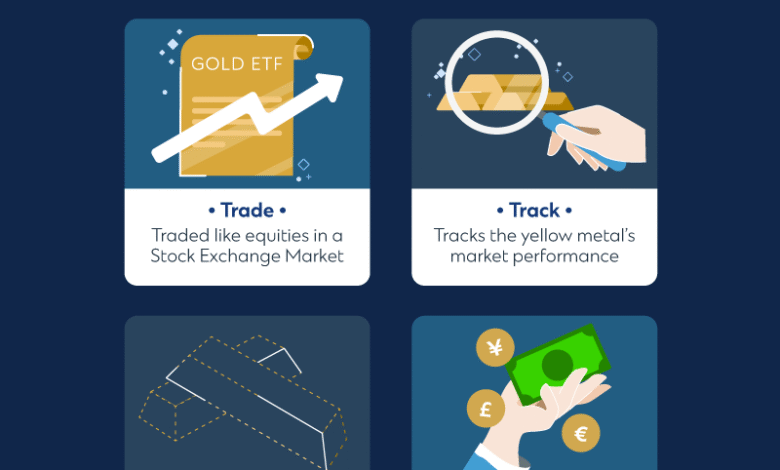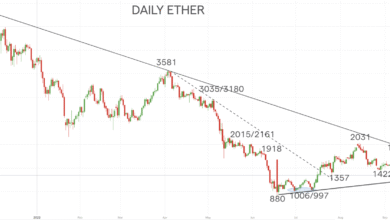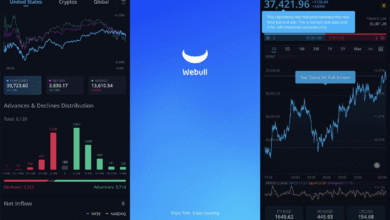Gold ETF Tax Implications: What Investors Should Know

Understanding the tax implications of Gold ETFs is crucial for investors looking to profit from precious metals. The IRS categorizes gold and similar assets as collectibles, which significantly impacts the potential tax burden for those trading in these instruments. Unlike traditional assets, Gold ETF tax rates can reach up to 28% on long-term capital gains, which is notably higher than the maximum 20% rate applied to stocks. This means that investors in popular gold funds like SPDR Gold Shares (GLD) and iShares Gold Trust (IAU) may be caught off guard by the steep taxes levied on their profits. Thus, it becomes vital for anyone looking to invest in gold to consider the potential Gold ETF tax implications when planning their investment strategy.
When delving into gold investments, it’s essential to recognize the broader context of taxation on exchange-traded funds backed by gold. Known as Gold ETFs, these financial products are not just simple investments; they carry specific tax obligations due to their classification as collectibles by the IRS. This designation leads to distinct tax scenarios, such as the higher collectible tax rates on long-term capital gains, which can significantly affect an investor’s net returns. As gold continues to capture investor interest, understanding terms like collectibles tax and long-term capital gains gold will help navigate the complex landscape of IRS gold ETF taxation. Ultimately, savvy investors must stay informed about the tax ramifications of their gold-focused investments to optimize their financial outcomes.
Understanding Gold ETF Tax Implications
Investing in Gold ETFs can turn profitable, but it also comes with significant tax implications that investors must understand. The Internal Revenue Service (IRS) classifies gold ETFs as collectibles, which subjects them to a higher tax rate compared to standard stocks. Specifically, the capital gains from the sale of these ETFs, if held for more than one year, are taxed at a top federal rate of 28%, which is substantially higher than the maximum 20% rate applied to long-term capital gains for conventional assets like stocks or real estate.
This classification and its ramifications take many Gold ETF investors by surprise. Funds such as SPDR Gold Shares (GLD) and iShares Gold Trust (IAU) fall under this umbrella, meaning investors need to prepare for a tax bill that could be considerably higher than anticipated. It’s crucial to recognize these tax liabilities when engaging in transactions involving gold ETFs to ensure optimized financial planning.
Comparative Gold ETF Tax Rates
The tax treatment of Gold ETFs as collectibles not only affects the long-term capital gains tax rate but also creates disparities when compared to traditional equities and investment avenues. While the maximum tax rate on long-term capital gains from stocks is capped at 20%, gold ETFs are subject to up to a 28% rate. Thus, a careful assessment of one’s investment strategy and time horizon in relation to these rates is essential for maximizing returns.
Investors should also consider the implications of the collectibles tax on their overall portfolio. If you find yourself in a higher income bracket, typically, your gains from Gold ETFs would be taxed at the maximum rate. Knowing how the IRS treats these assets—a stark contrast to standard investment options—can guide investors in making informed decisions that align with their financial goals.
Long-term Capital Gains on Gold Investments
Long-term capital gains from Gold ETFs, as defined by the IRS, involve profits realized from selling an asset held for more than a year. In the case of collectibles such as gold, these gains are taxed differently than other investments. The 28% cap can significantly reduce the net returns for investors, making it vital to understand this tax landscape before diving into gold investments.
For instance, if an investor sells gold ETFs after holding them for over a year and finds themselves facing a considerable tax liability due to this provision, it can dampen the excitement of seeing good returns. Investors must weigh these factors against the potential profit margins and economic conditions impacting gold prices.
Navigating Gold Investment Tax Laws
Tax laws surrounding gold investments can be complex and often vary from state to state. Understanding the federal and state levels of taxation on your profits from gold ETFs is crucial. Besides the federal collectibles tax rate of 28%, state taxes may also apply, further complicating the tax implications of investing in gold.
Investors must also account for possible net investment income taxes which can add a further 3.8% on top of the ordinary federal tax. If investors remain unaware of these layers of taxation, they risk facing much larger tax bills than expected. Therefore, it’s advisable to consult with tax professionals who have expertise in precious metal investments to devise effective strategies for tax minimization.
IRS Regulations on Gold ETFs and Collectibles Tax
The IRS has specific regulations defining how gold and other precious metals are taxed, categorized under collectibles. Knowing that ETFs structured as trusts are treated similarly to direct investments in physical gold helps to clarify why these high tax rates apply. This treatment can deter some investors from entering the gold market, knowing they will face steep tax implications.
Additionally, the IRS’s designation impacts not only investors’ strategies but also how financial advisors structure recommendations around gold. With proper guidance, investors can navigate these rules efficiently to optimize their tax situation and keep more of their earnings.
Impact of Collectibles Tax on Gold Returns
While gold has historically been seen as a safe haven during economic uncertainty, the collectibles tax can significantly impact the net returns on investment. When experiencing substantial price surges, the realization of gains could be mitigated by the hefty tax bill imposed on these funds, which prompts many to reconsider their investment strategy concerning gold ETFs.
Investors looking to enter or expand their holdings in gold should be acutely aware of how current tax implications can erode their expected profits. As market conditions fluctuate, being well-informed can affect critical investment decisions.
Strategies to Minimize Taxes on Gold ETFs
Investors can employ several strategies to potentially minimize their tax liabilities when investing in gold ETFs. One approach involves holding investments long enough to benefit from lower tax rates through traditional long-term capital gains planning, even if those rates are capped at a higher percentage due to the collectibles classification.
Moreover, individuals may explore tax-loss harvesting or reinvesting in tax-advantaged accounts, such as IRAs, to shield some gains from immediate taxation. Consulting with a tax advisor can reveal other tailored strategies, ensuring that investors minimize their tax burden effectively.
Understanding the Markets and Gold Prices
Emerging economic trends directly influence the pricing of gold. Given that gold has increased significantly in value over the past few years, understanding market dynamics is essential for any investor. Factors such as geopolitical uncertainty and inflation can drive up gold prices, thereby affecting potential profits and corresponding tax burdens.
Investors must stay informed about gold market reports and economic indicators that could impact their holdings. With prices reaching record highs, successful navigation of these market trends will require pertinent knowledge about both investment opportunities and associated tax implications when considering returns.
The Future of Gold ETF Investments
As the market for gold ETFs continues to evolve, so will the regulatory landscape concerning tax implications. Investors must keep abreast of changes in IRS regulations and market trends to capitalize on potential profits while mitigating risks associated with tax burdens.
Gold remains a vital asset in an investment portfolio, particularly during uncertain economic times. However, an awareness of tax liabilities will be critical for maintaining effective, profitable investment strategies in the years to come.
Frequently Asked Questions
What are the Gold ETF tax implications for investors?
Investors in Gold ETFs face unique tax implications because the IRS classifies gold as a collectible. This means that long-term capital gains from Gold ETFs are taxed at a maximum rate of 28%, which is higher than the rates for stocks, which cap at 20%. Understanding these Gold ETF tax implications is crucial for effective tax planning.
How do Gold ETF tax rates compare to other investments?
Gold ETF tax rates differ significantly from those of traditional assets. While long-term capital gains from stocks are capped at 20%, Gold ETFs are subject to a maximum tax rate of 28% due to their classification as collectibles. This impacts investors’ overall return, making it essential to consider the Gold ETF tax implications when investing.
What are the long-term capital gains taxation rules for Gold ETFs?
Long-term capital gains from Gold ETFs are taxed under the collectibles tax rules, which impose a maximum federal tax rate of 28%. This rate applies to profits on Gold ETFs held for more than one year. Investors should be aware of these long-term capital gains taxation rules to avoid surprises during tax season.
Are there different tax rates for short-term and long-term gains on Gold ETFs?
Yes, the tax rates differ significantly between short-term and long-term gains on Gold ETFs. Short-term gains are taxed as ordinary income, ranging from 10% to 37%, while long-term gains are taxed at a maximum rate of 28% under the collectibles tax rules. Understanding these differences is crucial for Gold ETF investors.
How does the IRS gold ETF taxation affect investment decisions?
The IRS gold ETF taxation, which imposes a 28% tax on long-term capital gains, can greatly affect investment decisions. Investors should factor in this higher tax liability when considering Gold ETFs versus other investment vehicles with lower capital gains tax rates. Proper tax planning can help maximize returns on gold investments.
What is the collectibles tax for Gold ETFs?
The collectibles tax for Gold ETFs is a federal tax rate of 28% imposed on long-term capital gains. This classification by the IRS means that profits from gold-backed ETFs are treated similarly to other collectibles like art or coins. Investors need to be aware of this collectibles tax when evaluating Gold ETF performance.
What should investors know about gold investment tax implications?
Investors should be aware that gold investment tax implications include a higher tax rate on long-term capital gains. Gold ETFs are taxed at a maximum rate of 28%, unlike traditional investments like stocks, which may only incur a 20% rate. This difference can significantly impact overall investment returns.
| Key Point | Explanation |
|---|---|
| IRS Tax Treatment | Gold and other precious metals, including ETFs backed by gold, are treated as collectibles by the IRS. |
| Capital Gains Tax Rate | Collectibles, including gold ETFs, are subject to a top federal tax rate of 28% on long-term capital gains. |
| Comparative Rates | For comparison, stocks face a maximum tax rate of 20% on long-term capital gains. |
| ETFs at Risk | Investors in funds like SPDR Gold Shares (GLD) and iShares Gold Trust (IAU) could face a higher tax rate than expected. |
| Significant Gold Profits | Recent increases in gold prices have resulted in substantial profits for investors, increasing tax liabilities. |
Summary
Gold ETF tax implications can significantly impact investors’ profits due to the IRS’s classification of gold and precious metals as collectibles. This means that long-term capital gains from such investments may be taxed at a higher rate of 28%, compared to the 20% maximum rate applicable to traditional stocks. Therefore, investors in gold ETFs, such as SPDR Gold Shares and iShares Gold Trust, should be aware of this classification to better plan for potential tax liabilities. Understanding these tax implications is crucial for making informed investment decisions.




